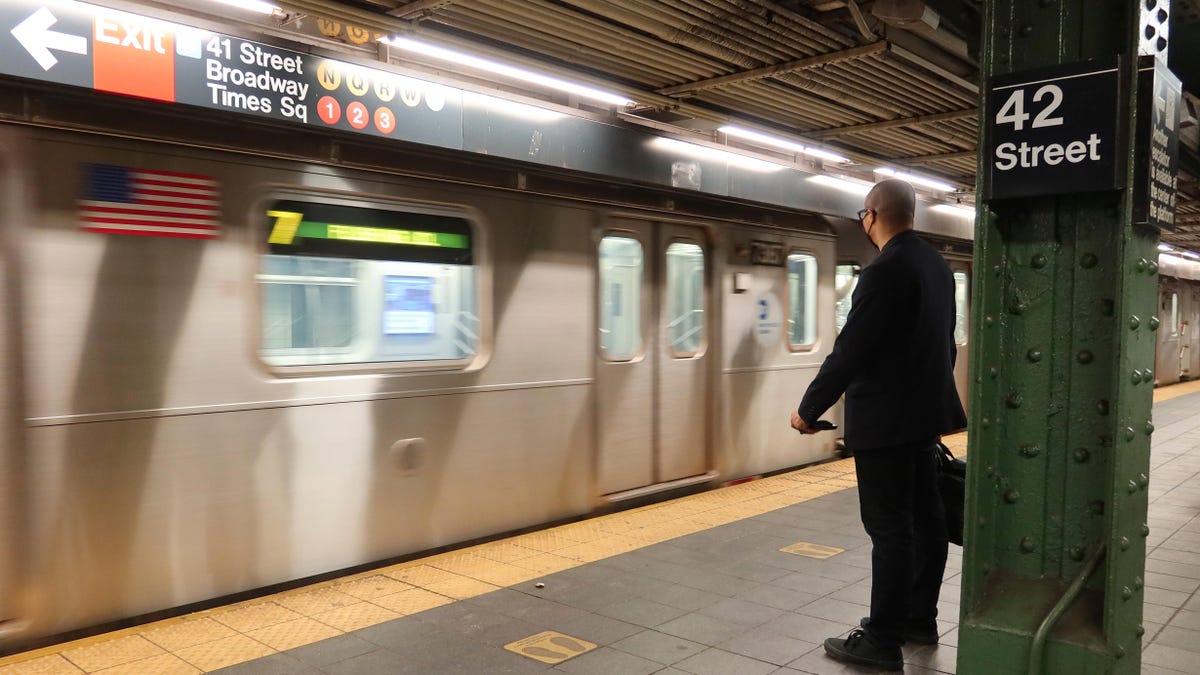There are few places on Earth warmer and less comfortable than a New York City subway platform on a hot summer day. The combination of heat, humidity and basement dankness come together to form a really nightmarish concoction. It’s enough to make the average person wonder why there can’t be a better way. Why isn’t there air conditioning on subway platforms? Why does it feel like it’s actually getting hotter?
Well, folks, the reason subway platforms are getting hotter is actually because of air conditioning… on the trains. In the past, The City has attempted to remedy the situation, but it hasn’t really helped, according to a New York Times article. NYC actually installed these blowers called “spot chillers” back in 2000 as a way to battle the heat, but they only ended up being a few degrees cooler than the ambient temperature.
Here’s how this grand chiller experiment died on the vine, according to The Times:
[A]ccording to Jamie Torres-Springer, who leads the M.T.A.’s construction department, the spot chillers were more a product of geographic luck than a harbinger of systemwide AC.
“Grand Central has a full chiller plant,” Mr. Torres-Springer said. The equipment that keeps the terminal upstairs cool “is the source of the chilled water, which is then circulated throughout those units to provide spot chilling on the platform.”
But in engineering terms, “the basic fact is that an old system like our subway system isn’t designed for air-conditioning,” Mr. Torres-Springer said. Almost every mile of track is open to the atmosphere via stairways and sidewalk grates.
“For the same way that your air-conditioner doesn’t work well if your windows are open, air-conditioning isn’t effective on a subway platform,” he said.
That’s such a big bummer, man. Of course, the fact there are 8 million other people sweating their asses off on the platform next to you doesn’t help much.
The whole issue was compounded when air conditioners were added to train cars. After all, it’s not like AC units just get rid of hot air entirely. It’s gotta go somewhere. This is how that move impacted The City’s subway platforms, from the New York Times:
In the postwar years, riders started demanding air-conditioning to replace fans that did little more than circulate stale air. With the purchase of 600 air-conditioned cars in 1967, the Lindsay administration got the ball rolling, but it would take until 1993 for the Transportation Authority to declare that 99 percent of its cars had AC.
Unfortunately, the air-conditioners that remove hot air from the cars dump it directly into tunnels and stations, which do a fine job of trapping it.
There is some good news, though. Some progress has been made at newer stations across the city.
[T]emperatures are noticeably lower in the system’s newest stations, including the 7 line’s 2015 extension to Hudson Yards and the three new stops on the Second Avenue subway, which opened in 2017.
The agreeable atmosphere down there owes itself to cooling towers, where fans draw air across pipes filled with a mix of cold water and glycol. In Transit Authority parlance, it’s called “air-tempered climate control.”
“It’s not a full air-conditioning solution,” Mr. Torres-Springer said. “But it can keep the temperature about seven to 10 degrees cooler than the ambient temperature, and it helps to reduce humidity in the station, which is valuable.”
“When I was designing it, they came along midway and said, ‘Can you give us some cooling for the local subway line?’” Mr. Copeland said.
That is the only reason those coolers perched over the 4, 5 and 6 subway platforms are there at all.
This coincidence is also why we won’t be seeing chilled air pumped into older subway stops. “Other stations don’t have chiller plants,” Mr. Torres-Springer said.
Even if you got through all of this and are still wondering why The City doesn’t just pay for air conditioners to be installed at platforms, well, as with most things, it comes down to money. As it turns out, it would cost more than Torres-Springer could even guess.
The New York Times did some quick math, and it found that if you take Grand Central’s system and expand it across the entire NYC Subway, it would cost right around $5 billion. I guess we are just going to stay hot.

